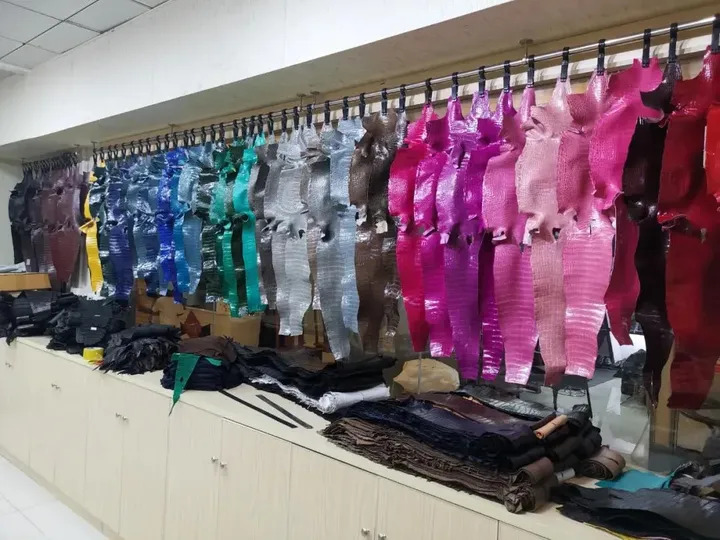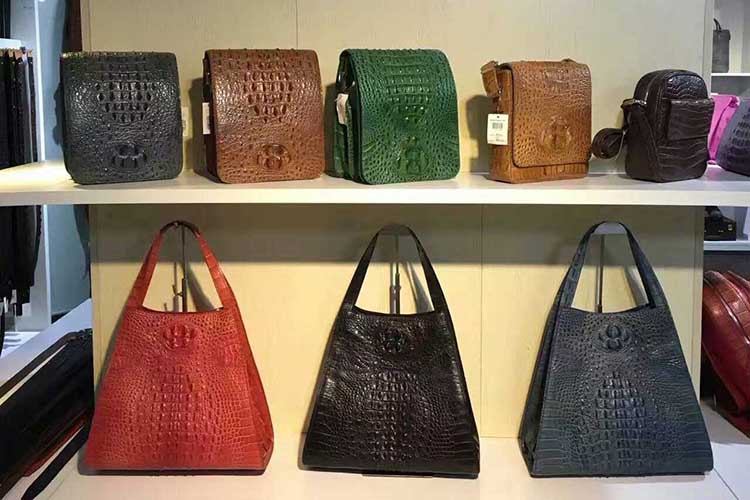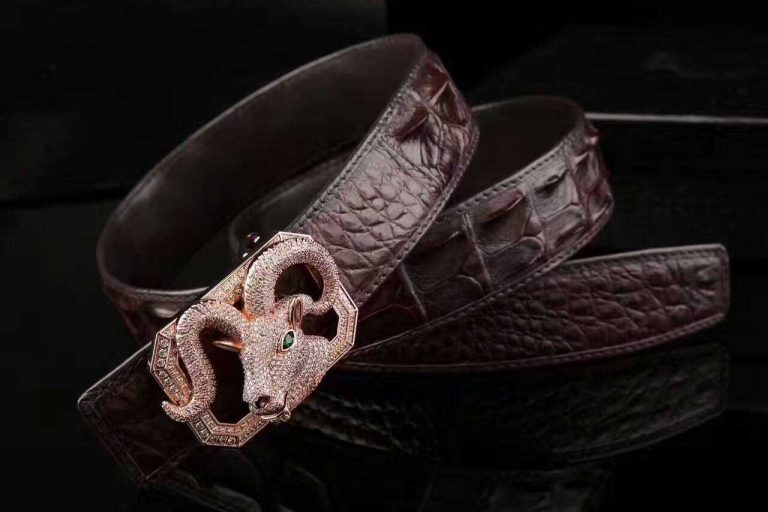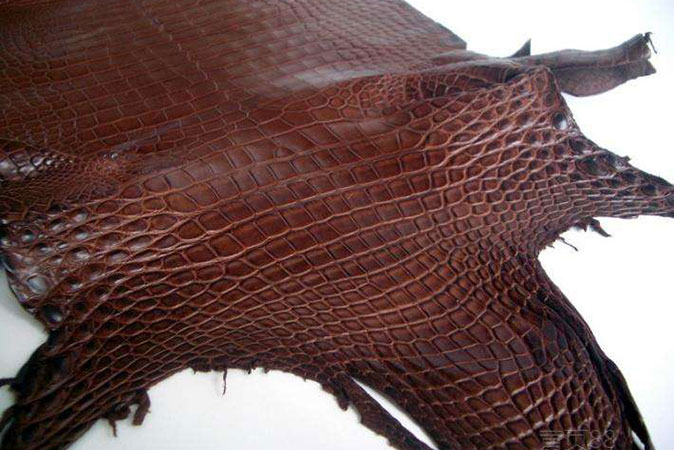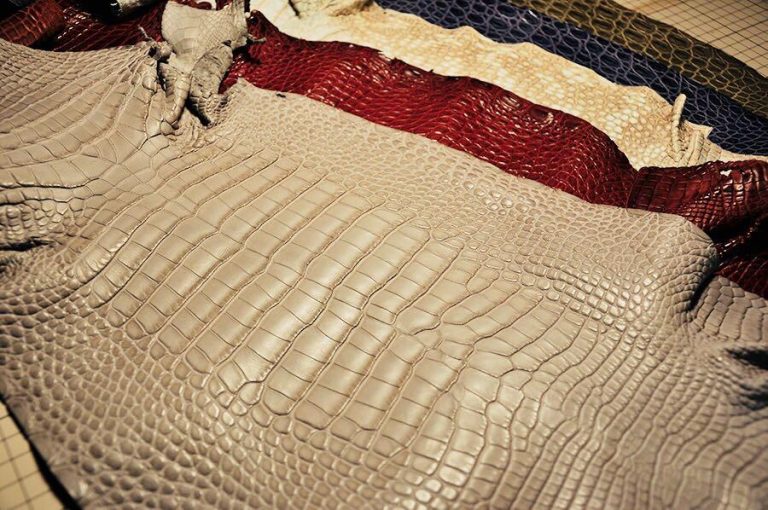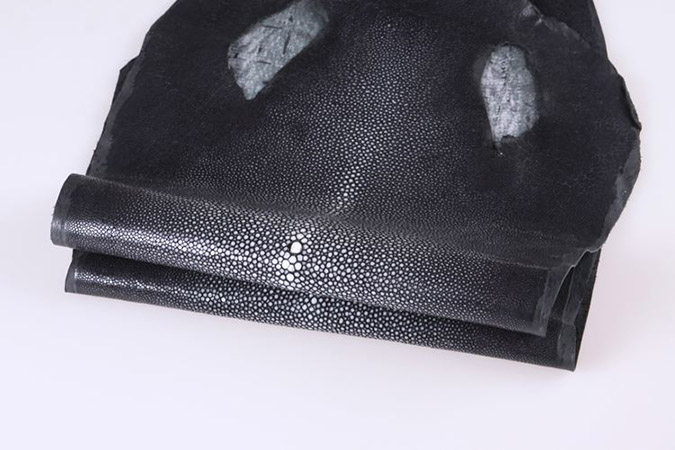Crocodile skin is the gold among leathers and is known for its top-notch luxury and rarity. This is not only because the number of crocodiles is extremely rare, but also because crocodiles grow slowly and the cost of breeding is extremely high, and the usable crocodile skin is limited to the long and narrow part of the crocodile’s abdomen. The beauty of crocodile leather lies in its natural gradient checkered pattern. Although it lacks elasticity, its texture is very strong. There is a saying that as long as crocodile leather goods are properly maintained, they will become glossier and softer with use. I believe everyone has often seen or heard about leather goods made from crocodiles. But did you know that crocodile leather goods such as belts and bags can last 50 years as long as they are properly maintained? Some people also say that crocodile skin is also divided into three, six or nine grades? Is this statement reliable? Today I will take you to truly understand crocodile skin.
To fully understand crocodile skin, we need to first understand crocodiles. First of all, crocodile in Chinese is a general term, which includes 23 species of creatures in 3 families and 8 genera under the order Crocodile. Different varieties have different body shapes and different skin textures in different locations, which determines its use and the final form that the finished product can achieve. Although there are as many as 23 species of crocodiles, when it comes to crocodile skin, Crocodylus porosus, Crocodylus niloticus, Alligator mississippiensis, Crocodylus siamensis, Caiman (Caimen genus 3 species) These species are not suitable for leather making, not other species. For example, large crocodiles (Gavialis gangeticus), black caiman (Melanosuchus niger), Orinoco crocodile (Crocodylus intermedius), swamp crocodile (Crocodylus palustris) and other large crocodiles have a good available area on their abdomens, but because of the leather The trade was heavily hunted to the brink of extinction, so it is now difficult to see their leather products, and American crocodiles (Crocodylus acutus) suffer from high mortality in breeding.
The same goes for crocodile skin and diamonds. Their differences in size, color, and origin determine their disparate values. Let’s start with the best grades of crocodile.
Porosus is the finest grade of crocodile skin, commonly known as crocodile, the largest species of crocodile. The leather has the best quality and the highest value. The leather pattern is uniform and neat. If you look carefully, you can see the tiny pores. Porosus is particularly rare on the market. LANA MARKS’ POSITANO three-color bag is made of the belly skin of Porosus crocodile.
Crocodile is the second grade of premium crocodile leather. Crocodile has the best leather from the Americas and Africa, especially the Nile crocodile. Their abdomens have fine and even squares, with stomata as thin as needle tips, and the ventral sides extend into a circle.
Alligator is the third level of crocodile skin. Alligator is called an alligator, and its leather is slightly inferior to that of Crocodile. The American Mississippi alligator is the most famous. It is not as shiny as the Crocodile and has no pores. But it is also very popular because of its full leather and rich patterns. Especially suitable for mature and stable men’s briefcase.
All grades of crocodile skin are best on the belly, second on the ventral side, and worst on the back and tail. Let’s take a look at the structure of crocodile skin: This is a complete crocodile belly. The part in the red box is the belly (Belly), the green box is the ventral side (Flank), the left piece is the big chin, and the right strip is is the tail.
Things are rare and valuable. Although crocodile skin is rare, it is very popular among the public. Many manufacturers will inevitably use it to make a fuss. It is common for fake crocodile skins such as crocodile pattern embossing to be passed off as real crocodile skins. Today I will teach you how to use it. Four dimensions to identify genuine and fake crocodile skin:
- Feel: Real crocodile skin, especially the skin on the back, will have raised bone spurs, which contain bones. You can feel the hardness of the bones by pressing it with your hand (PS: If it is embossed with crocodile pattern If it does, it will go down as soon as you press it, and there will be no skeletal feel).
- Look at the texture: The texture of real crocodile skin is very natural, and the tip outline of the bone spur is clear and three-dimensional (PS: the embossed texture is rigid, and the tip outline is blunt).
- Look at the color: unlike other leathers, crocodile skin becomes more and more shiny with use (PS: fake crocodile skin will lose its luster after being used for a long time, becoming dull and looking old).
- Comparison of multiple pieces: The texture of real crocodile leather is irregular, the texture of each bag is different, and there will be many pores of different sizes (PS: The texture of fake crocodile leather is embossed and looks like Neat, the embossing of each bag is the same, and there are no air holes of different sizes on the surface).
The most valuable part of a crocodile is its belly, and the belly is close to the ground. Whether it is farmed or wild, it will inevitably have scars. The fewer scars, the more valuable it is. This is easy to understand. Brands like Hermès I will directly choose the leather with the least damage.
So what’s up with those cheap belly skins on the market? In fact, it is very simple. It is repaired by spray painting. The worse the leather, the thicker the paint, and even the texture between the scales cannot be seen, let alone the texture of the leather.
Another question that many people are interested in is, is crocodile leather durable? Everyone says that crocodile skin is durable, but in fact, most of the current crocodile skin products are made by cutting the crocodile skin very thin, and then gluing sheepskin as a support to achieve the most beautiful effect. This is not very related to durability. . In addition, crocodile leather is most afraid of dryness and dust. Cowhide leather shoes may not break if you wear them for three to five years without maintenance, but crocodile leather is different. Its oil is easy to evaporate, and the scales will fall off if not maintained, so it is best when not in use. Put it in a dust bag and do regular maintenance, except if you have money and willfully. Also, it cannot be used in rainy days. Crocodile skin absorbs water. Rainwater is weakly acidic and contains impurities, which will cause the greatest damage to crocodile skin. In severe cases, it will fade (the color fastness of crocodile skin is not as stable as cowhide). There are a hundred reasons to buy crocodile leather, but it’s never because of its durability.

